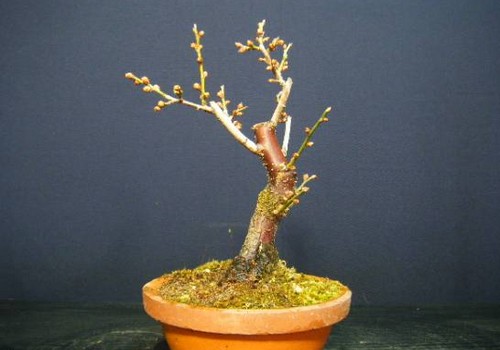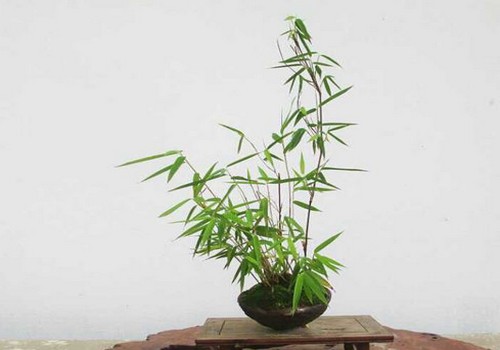Key points of bonsai production of Buddha belly tree
Buddha belly tree is a succulent plant of Euphorbiaceae. The stem is short and fat, fleshy, and the base is inflated, like the belly of Maitreya Buddha, hence the name. Leaves palmately peltate-3-lobed, with large leaf scars. Flowers gather at the top of the branch, orange-red, five-petal, pedicel branches like red coral, so it is also known as coral flowers. It is favored by people because of its peculiar shape, bright colors and blossoms all the year round.

Buddha belly tree likes warm, dry and plenty of sunshine, strong nature, strange plant shape, easy to cultivate, is an excellent indoor potted flowers. Warm land can also be cultivated in the garden, and it can also be used as landscape trees and handicrafts.
The tree of Buddha belly is peculiar in shape, which is eye-catching for its thick bottle-shaped trunk with a large amount of water. It has a strange shape and blossoms all the year round. It is a good indoor potted plant in China for a long time.
In making bonsai of Buddha belly tree, we should pay attention to the following two aspects:
1. The most important feature of the single-tree landscape Buddha belly tree is that it has few branches. When making bonsai, the potted noodles should be slightly empty, and the solution is to match the scenery, such as decorating small rocks or rockery. Lying stone with tall trees can show that the trees are taller, "towering people cloud", "ancient pagoda" and "pavilion" indicate that there are "temples" and "villages" nearby, making the landscape colorful. The branches of the tree are long and slender. In order to reduce the height, the stem can be cut short by 1 stroke or more than 3, which can promote lateral branches. After being truncated, the left and right lateral branches can germinate, and inflorescences can be produced, blooming numerous florets, gorgeous and charming as red coral.
2. The production of combined bonsai is to plant two Buddha belly trees of different sizes in the same shallow basin, preferably with an oval shallow basin, which can visually reduce the height of the bonsai and conform to the principle of "high trees with low pots". Enhance the artistry of viewing.
Time: 2019-05-26 Click:
- Prev

The method of making five-color plum bonsai
The five-color plum used to make bonsai can be propagated by cutting, which is usually carried out in the growing season. The sturdy annual branches are cut, cut every two segments, inserted in sand or vermiculite, maintained under the shade shed, keep the soil and air moist, and take root for about 40 to 50 days. The seedlings can be divided into pots.
- Next

The method of making bamboo bonsai
Son chic and elegant, elegant, elegant Athens, used to make small bamboo bonsai, decorate the room, very elegant. There are many kinds of bamboo, and it is appropriate to make bamboo bonsai with thin stems and narrow leaves, such as Phyllostachys pubescens, Yinyang bamboo and so on. When transplanting bamboo, one or two years of age should be selected in spring.
Related
- Fuxing push coffee new agricultural production and marketing class: lack of small-scale processing plants
- Jujube rice field leisure farm deep ploughing Yilan for five years to create a space for organic food and play
- Nongyu Farm-A trial of organic papaya for brave women with advanced technology
- Four points for attention in the prevention and control of diseases and insect pests of edible fungi
- How to add nutrient solution to Edible Fungi
- Is there any good way to control edible fungus mites?
- Open Inoculation Technology of Edible Fungi
- Is there any clever way to use fertilizer for edible fungus in winter?
- What agents are used to kill the pathogens of edible fungi in the mushroom shed?
- Rapid drying of Edible Fungi

